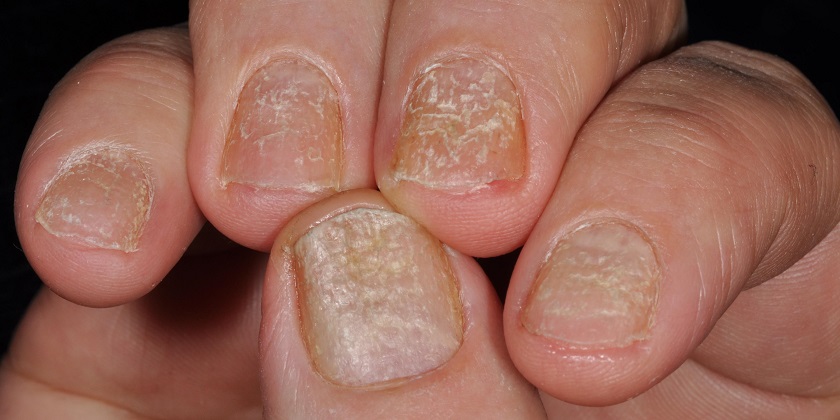- Home
- Nail Diseases Treatment

Overview
Fungal infections can affect any part of the body. Fungi are normally present in and on the body alongside various bacteria. When a fungus begins to overgrow, you can get an infection.
Onychomycosis, also called tinea unguium, is a fungal infection that affects either the fingernails or toenails. Fungal infections normally develop over time, so any immediate difference in the way your nail looks or feels may be too subtle to notice at first.
Why Does It Develop?
A fungal nail infection occurs from the overgrowth of fungi in, under, or on the nail. Fungi thrive in warm, moist environments, so this type of environment can cause them to naturally overpopulate. The same fungi that cause jock itch, athlete’s foot, and ringworm can cause nail infections.
Fungi that are already present in or on your body can cause nail infections. If you have come in contact with someone else who has a fungal infection, it may have spread to you. According to the American Academy of Dermatology (AAD), fungal infections affect toenails more commonly than fingernails because your toes are usually confined to your shoes, where they’re in a warm, moist environment.
If you get a manicure or pedicure at a nail salon, be sure to ask how the staff disinfects their tools and how often they do it. Tools, such as emery boards and nail clippers, can spread fungal infections from person-to-person if they’re not sanitized.
Who Is at Risk for Fungal Infections?
There are many different causes of fungal nail infections, and each cause has a treatment of its own. Although many of the causes of a fungal nail infection are preventable, some risk factors increase the likelihood of developing it. You’re more likely to develop a fungal nail infection if you:
- have diabetes
- have a disease that causes poor circulation
- are over age 65
- wear artificial nails
- swim in a public swimming pool
- have a nail injury
- have a skin injury around the nail
- have moist fingers or toes for an extended time
- have a weakened immune system
- wear closed-toe shoes, such as tennis shoes or boots
Nail infections occur more often in men than in women, and the infections are found in adults more often than in children. If you have family members who often get these types of fungal infections, you’re more likely to get them as well. Older adults are at the highest risk for getting fungal infections of the nails because they have poorer circulation and their nails grow more slowly and thicken as they age.
What Does It Look Like?
A fungal infection of the nail may affect part of the nail, the entire nail, or several nails.
Visible Signs
Visible signs of a fungal nail infection include:
- scaling under the nail, which is called subungual hyperkeratosis
- white or yellow streaks on the nail, which is called lateral onychomycosis
- a crumbling corner or tip of the nail, which is called distal onychomycosis
- flaking white areas on the nail’s surface, which may include pits in the nail
- the appearance of yellow spots at the bottom of the nail, which is called proximal onychomycosis
- loss of the nail
Common Signs
Common signs of a fungal nail infection include:
- a distorted nail that may lift off from the nail bed
- an odor coming from the infected nail
- a brittle or thickened nail


